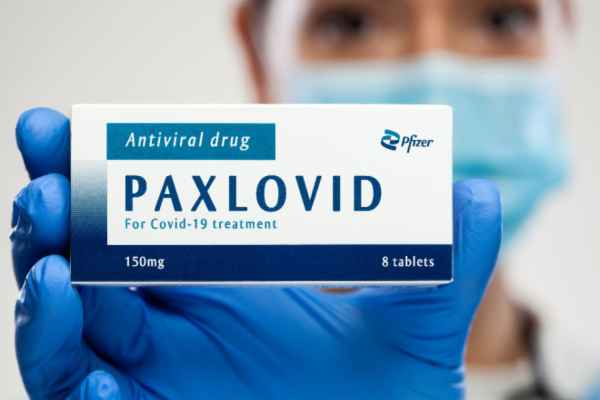As The New York Times reports, when the antiviral treatment Paxlovid came into wider use for COVID-19 infections earlier this year, doctors who prescribed it and patients who took it noticed that symptoms sometimes flared up again a few days after having gone away. Some people even tested negative before they experienced the rebound. But this puzzling phenomenon can occur whether you take Paxlovid or not, according to a new study.
Researchers found that when patients received a placebo instead of treatment, a portion of them still experienced a rebound of their symptoms after they had initially improved. “Symptom return is common,” said Dr. Davey Smith, the chief of infectious diseases and global public health at the University of California, San Diego School of Medicine, who led the study. “It doesn’t mean that things are going south. It’s just the natural way the disease goes.” What is surprising, however, is how many people may experience a rebound, he said.
To understand the natural variability in coronavirus symptoms, Smith and his team tracked 158 clinical trial participants who had tested positive for COVID-19 between August and November 2020. Each person kept a daily diary and marked 13 different COVID-19 symptoms as being absent, mild, moderate or severe. Among the 108 people whose symptoms had improved without antiviral treatment, and had completely disappeared for at least two consecutive days, 48 people (44% of those who recovered) noted that symptoms flared up again at various times during four weeks of follow-up.
“The good news is that nobody who had their symptoms return needed to go to the hospital or died or even got severe symptoms,” Smith said. Eighty-five percent of those who had a rebound reported that their symptoms were mild; 15% had at least one moderate symptom.
The most common complaints during a symptom rebound were coughing, feeling fatigued and having a headache. These were all similar to symptoms people reported at the start of the study, in the active phase of their infection, Smith said.
One of the limitations of the study, however, is that it looked at older strains of coronavirus in people, before vaccines became available. That makes it hard to extrapolate how frequently rebound symptoms may be an issue with the current omicron strains, especially since most people also have some immune experience with the virus at this point in the pandemic, either because of a past infection or their vaccination. Symptoms can also change with each variant, and their severity can be very subjective, said Dr. Bruce Farber, the chief of public health and epidemiology at Northwell Health in New York. Patients noted rebound symptoms that “were remarkably mild and, quite frankly, fairly unimpressive,” he said.
The pattern of waxing and waning symptoms occurs in several respiratory diseases, including the common cold, flu and respiratory syncytial virus. “People have never really paid a lot of attention to it in the past, to be honest, as long as the patient is clinically doing better,” Farber said. Symptoms sometimes disappear and then show up again because of the body’s own immune response to infection, Farber said. “I call this friendly fire,” Farber said. “The immune system is very well-intentioned and 100% needed, but it is clearly overreactive at times, and that often causes problems.”
—
Photo Credit: Cryptographer / Shutterstock.com
